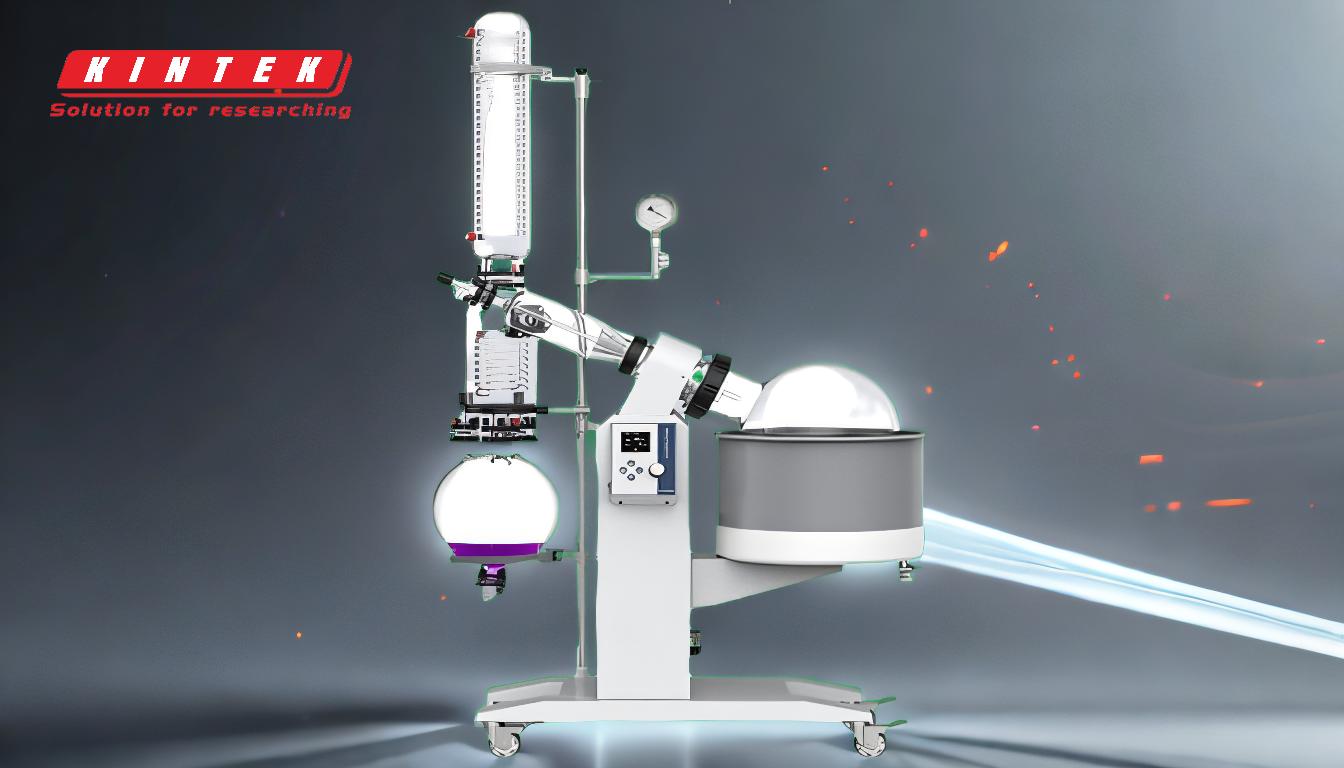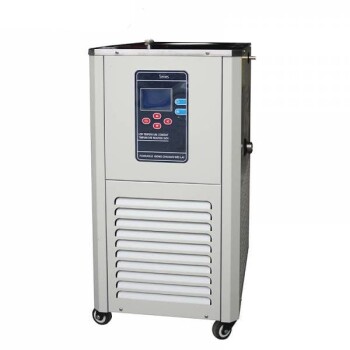A chiller in a rotary evaporator setup is a critical component that provides precise and stable cooling to ensure efficient solvent vaporization. During the evaporation process, the solvent becomes warm, and a chiller pumps cool fluid (such as water or a water/glycol mixture) to remove heat, maintaining the required temperature for proper operation. The warm fluid is then returned to the chiller for re-cooling, creating a continuous cycle that supports the rotary evaporator's functionality. This cooling process is essential for maintaining consistent performance and achieving accurate results in laboratory or industrial applications.
Key Points Explained:

-
Purpose of a Chiller in a Rotary Evaporator:
- A chiller is used to provide precise and stable cooling during the evaporation process.
- It ensures that the solvent vaporizes efficiently by maintaining the required temperature.
- Without a chiller, the solvent would overheat, leading to inefficient vaporization and potential damage to the system.
-
Cooling Mechanism:
- The chiller pumps cool fluid (typically water or a water/glycol mixture) to the rotary evaporator.
- This fluid absorbs heat generated during the evaporation process, cooling the system.
- The warm fluid is then returned to the chiller, where it is re-cooled and recirculated.
-
Importance of Temperature Control:
- Precise temperature control is crucial for the proper vaporization of solvents.
- The chiller ensures that the temperature remains within the optimal range, preventing overheating or undercooling.
- This control enhances the efficiency and accuracy of the rotary evaporator.
-
Types of Coolants Used:
- Water is commonly used as a coolant due to its availability and cost-effectiveness.
- A water/glycol mixture is often used in applications requiring lower temperatures, as glycol lowers the freezing point of the coolant.
- The choice of coolant depends on the specific requirements of the rotary evaporator and the solvents being processed.
-
Integration with Rotary Evaporator:
- The chiller is connected to the rotary evaporator via a closed-loop system.
- Cool fluid is circulated through the condenser or cooling coils of the rotary evaporator.
- This integration ensures continuous cooling and efficient operation of the system.
-
Benefits of Using a Chiller:
- Enhanced Efficiency: Proper cooling ensures faster and more efficient solvent vaporization.
- Consistency: Precise temperature control leads to consistent results in experiments or production processes.
- Equipment Protection: Prevents overheating, which can damage the rotary evaporator and reduce its lifespan.
- Versatility: Can be used with a wide range of solvents and applications, making it a versatile addition to the setup.
-
Applications of Chillers in Rotary Evaporators:
- Laboratory Research: Used in chemical, pharmaceutical, and biological research for solvent recovery and purification.
- Industrial Processes: Applied in industries such as food, cosmetics, and petrochemicals for large-scale solvent evaporation.
- Environmental Testing: Supports processes like sample concentration and solvent removal in environmental analysis.
-
Considerations for Purchasing a Chiller:
- Cooling Capacity: Ensure the chiller can handle the heat load generated by the rotary evaporator.
- Temperature Range: Choose a chiller that can achieve the required cooling temperatures for your specific applications.
- Coolant Type: Select a chiller compatible with the coolant you plan to use (e.g., water or water/glycol mixture).
- Energy Efficiency: Look for energy-efficient models to reduce operating costs.
- Maintenance Requirements: Consider ease of maintenance and availability of spare parts.
By understanding the role and functionality of a chiller in a rotary evaporator, users can make informed decisions when selecting and operating this essential equipment. Proper integration and maintenance of the chiller ensure optimal performance and longevity of the rotary evaporator system.
Summary Table:
| Key Aspect | Details |
|---|---|
| Purpose | Provides precise and stable cooling for efficient solvent vaporization. |
| Cooling Mechanism | Pumps cool fluid (water or water/glycol) to absorb heat and recirculates. |
| Temperature Control | Maintains optimal temperature for consistent performance. |
| Coolant Types | Water (common) or water/glycol (for lower temperatures). |
| Integration | Connected via a closed-loop system for continuous cooling. |
| Benefits | Enhanced efficiency, consistency, equipment protection, and versatility. |
| Applications | Lab research, industrial processes, and environmental testing. |
| Purchase Considerations | Cooling capacity, temperature range, coolant type, energy efficiency, and maintenance. |
Optimize your rotary evaporator setup with the right chiller—contact our experts today!










